Dancing With The Stars is a sensational show that captivates audiences with its dazzling dance routines and celebrity pairings. At ten-dance.com, we are excited to provide you with all the inside scoop. This article dives into the exciting partnerships of season 33, exploring the backgrounds of the celebrities and their professional dance partners, offering insights into what makes each pairing unique, and shedding light on the dynamics that could lead them to victory.
1. Who are the celebrity contestants and their professional partners on Dancing with the Stars Season 33?
The celebrity contestants on Dancing with the Stars Season 33 include a diverse range of personalities, each paired with a professional dancer:
- Phaedra Parks (star of “The Real Housewives of Atlanta”) is paired with Val Chmerkovskiy.
- Danny Amendola (former NFL player) is paired with Witney Carson.
- Joey Graziadei (former “Bachelor”) is paired with Jenna Johnson.
- Ilona Maher (Olympic rugby player) is paired with Alan Bersten.
- Chandler Kinney (actress from the “Zombies” franchise) is paired with Brandon Armstrong.
- Anna Delvey (notorious scam artist) is paired with Ezra Sosa.
- Eric Roberts (actor) is paired with Britt Stewart.
- Brooks Nader (model) is paired with Gleb Savchenko.
- Reginald VelJohnson (actor from “Family Matters”) is paired with Emma Slater.
- Tori Spelling (actress from “Beverly Hills, 90210”) is paired with Pasha Pashkov.
- Jenn Tran (former “Bachelorette”) is paired with Sasha Farber.
- Dwight Howard (professional basketball player) is paired with Daniella Karagach.
- Stephen Nedoroscik (Olympic gymnast) is paired with Rylee Arnold.
These pairings bring together a mix of athleticism, performance experience, and unique personalities, promising a season full of surprises and entertainment.
1.1 What unique qualities does each celebrity contestant bring to Dancing with the Stars?
Each celebrity contestant brings a unique set of skills and experiences to Dancing with the Stars:
- Phaedra Parks: Known for her dynamic personality and stage presence from “The Real Housewives of Atlanta,” Phaedra brings a natural flair for performance. Her confidence and ability to command attention could translate well to the ballroom.
 Phaedra Parks on Dancing with the Stars
Phaedra Parks on Dancing with the Stars
Alt text: Phaedra Parks, a former Real Housewife of Atlanta, is styled in a glittering gown ready to dance.
- Danny Amendola: As a former NFL player, Danny brings incredible athleticism, discipline, and competitive spirit to the show. His background in sports could give him an edge in learning choreography and performing physically demanding routines.
 Danny Amendola in Dancing with the Stars
Danny Amendola in Dancing with the Stars
Alt text: Danny Amendola, a former NFL player, is dressed in dance attire for Dancing with the Stars.
- Joey Graziadei: Fresh from “The Bachelor,” Joey is accustomed to being in the spotlight and handling pressure. His charisma and relatability might help him connect with the audience and judges.
 Joey Graziadei on Dancing with the Stars
Joey Graziadei on Dancing with the Stars
Alt text: Joey Graziadei, previously on The Bachelor, is shown in dance pose for Dancing with the Stars.
- Ilona Maher: As an Olympic rugby player, Ilona possesses strength, agility, and a competitive mindset. Her experience in high-pressure situations could help her thrive in the Dancing with the Stars environment.
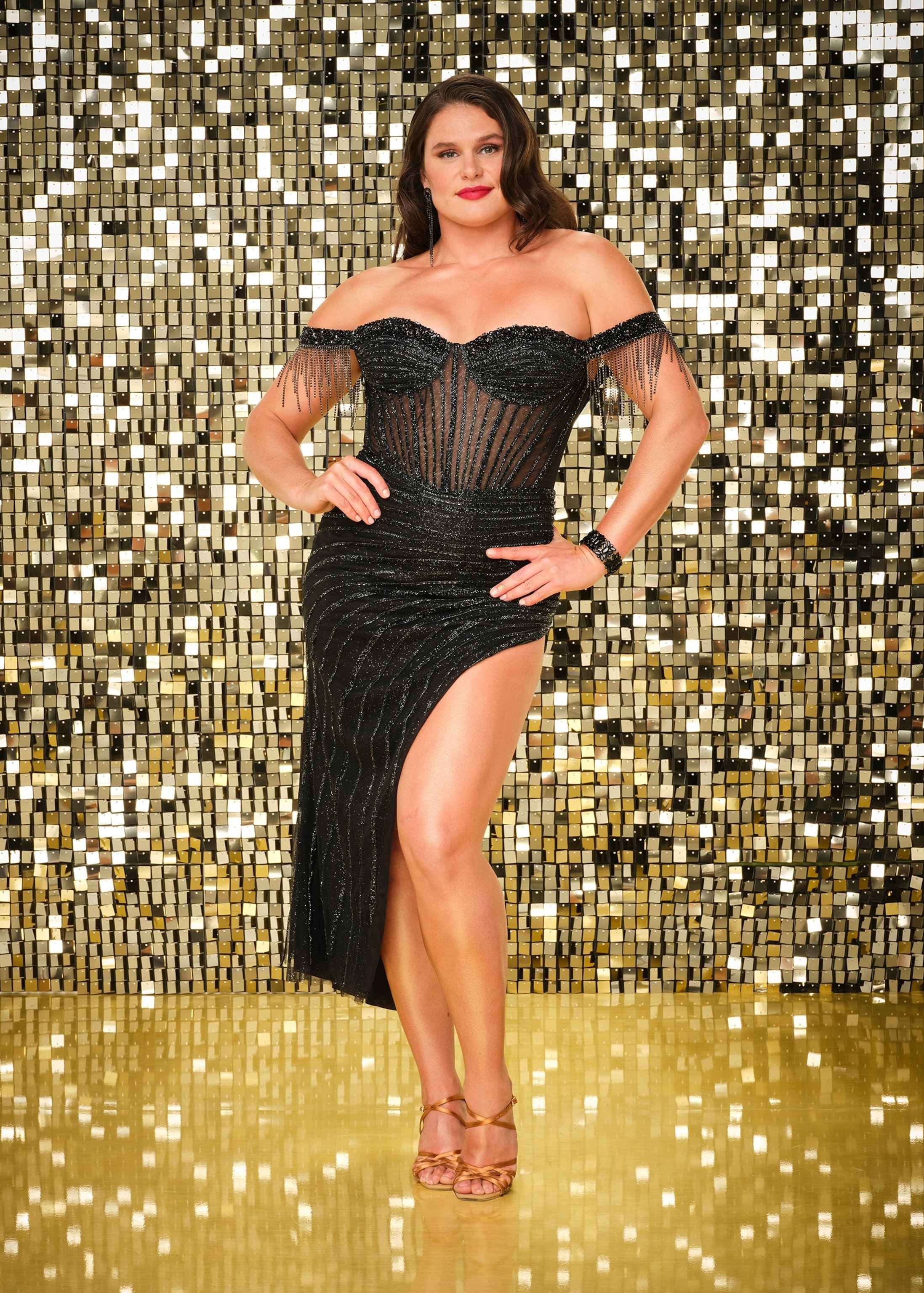 Ilona Maher on Dancing with the Stars
Ilona Maher on Dancing with the Stars
Alt text: Ilona Maher, an Olympic rugby player, is ready to compete in dance attire.
- Chandler Kinney: With a background in the “Zombies” franchise and “Pretty Little Liars,” Chandler is no stranger to performing. Her dance experience as a child and her acting skills could make her a versatile contender.
 Chandler Kinney in Dancing with the Stars
Chandler Kinney in Dancing with the Stars
Alt text: Chandler Kinney, an actress and childhood dancer, prepares to dance for Dancing with the Stars.
- Anna Delvey: Known for her audacious persona, Anna brings intrigue and a unique storyline to the show. Her willingness to embrace new challenges might surprise audiences and judges alike.
 Anna Delvey on Dancing with the Stars
Anna Delvey on Dancing with the Stars
Alt text: Anna Delvey, known for her unique story, will compete on Dancing with the Stars.
- Eric Roberts: With a long and varied acting career, Eric brings a wealth of experience and a willingness to step outside his comfort zone. His dramatic background could add depth to his performances.
 Eric Roberts on Dancing with the Stars
Eric Roberts on Dancing with the Stars
Alt text: Eric Roberts, an experienced actor, smiles as he prepares to dance on Dancing with the Stars.
- Brooks Nader: As a Sports Illustrated model, Brooks is comfortable in the spotlight and has experience with posing and movement. Her background could help her with posture and presentation in the ballroom.
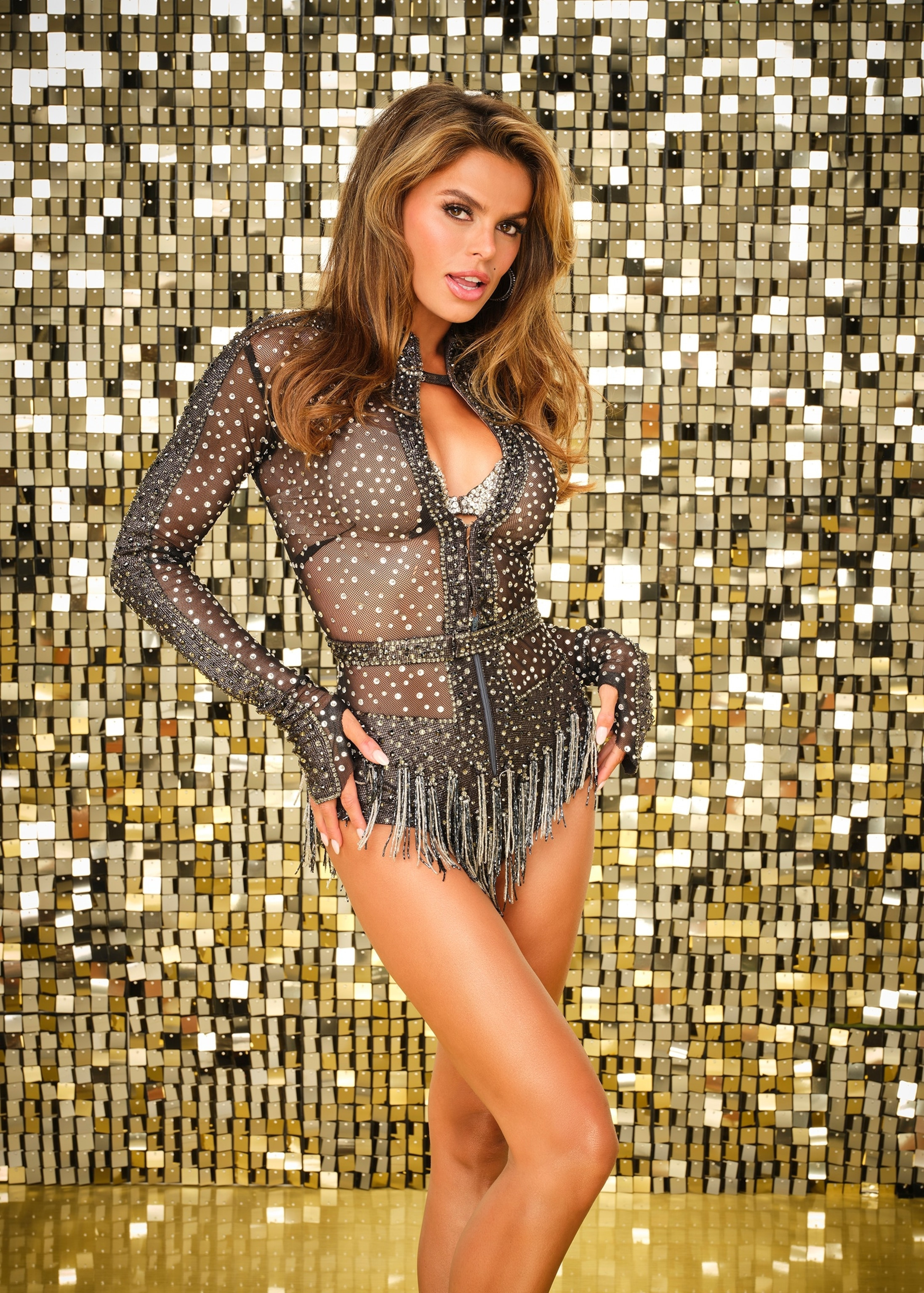 Brooks Nader on Dancing with the Stars
Brooks Nader on Dancing with the Stars
Alt text: Brooks Nader, a model, will showcase her dance abilities on Dancing with the Stars.
- Reginald VelJohnson: Known for his role as a beloved TV dad, Reginald brings warmth and familiarity to the show. His charm and likability could win over audiences and judges.
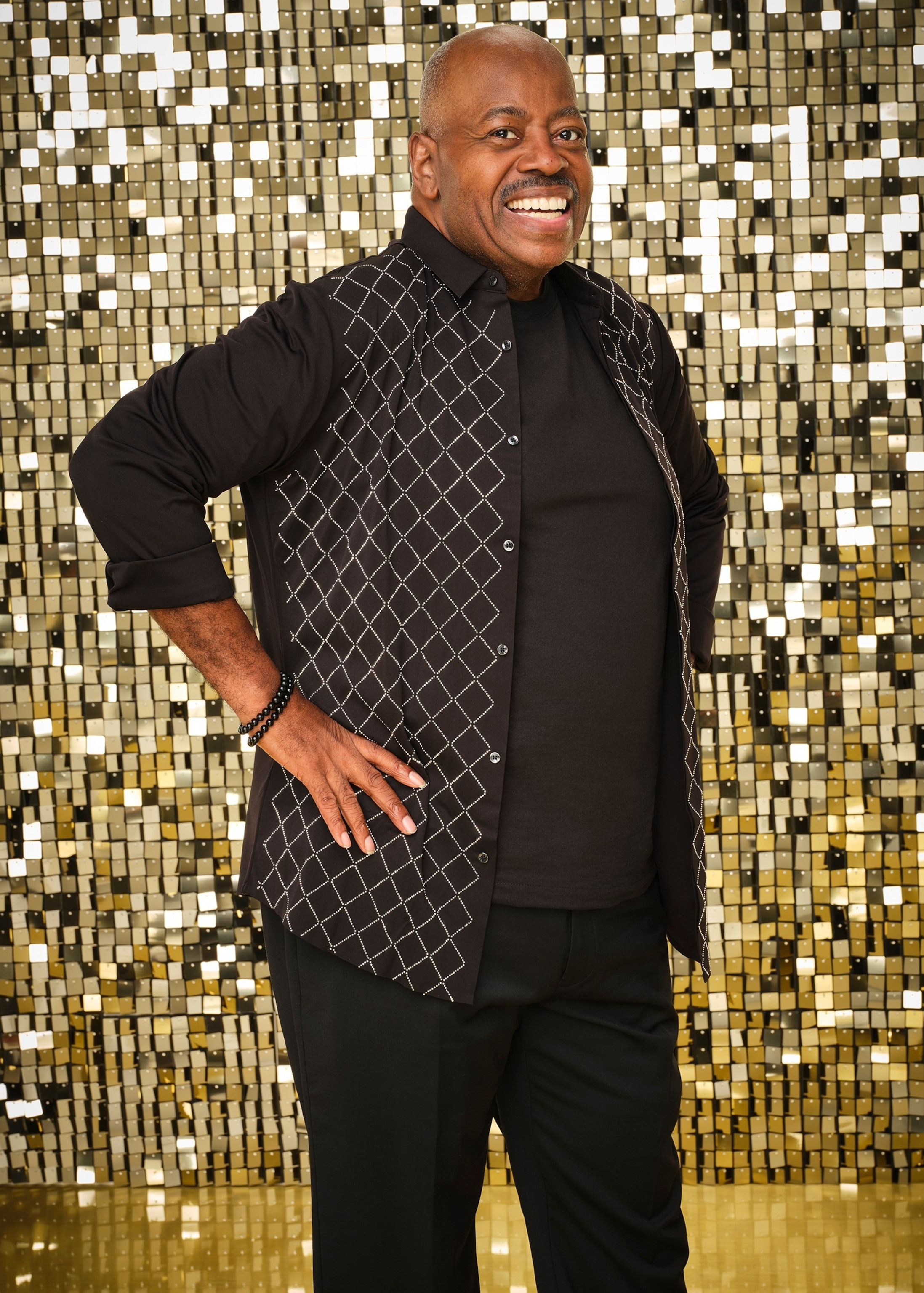 Reginald VelJohnson on Dancing with the Stars
Reginald VelJohnson on Dancing with the Stars
Alt text: Reginald VelJohnson, famous for his role as a TV dad, is on Dancing with the Stars.
- Tori Spelling: As an actress with experience in teen dramas, Tori brings a mix of performance skills and relatability to the show. Her personal story and connection to the original “90210” could resonate with viewers.
 Tori Spelling on Dancing with the Stars
Tori Spelling on Dancing with the Stars
Alt text: Tori Spelling, known from Beverly Hills 90210, is set to compete on Dancing with the Stars.
- Jenn Tran: Coming straight from “The Bachelorette,” Jenn is ready to channel her heartbreak into determination and success. Her experience in handling emotional challenges could give her a unique edge.
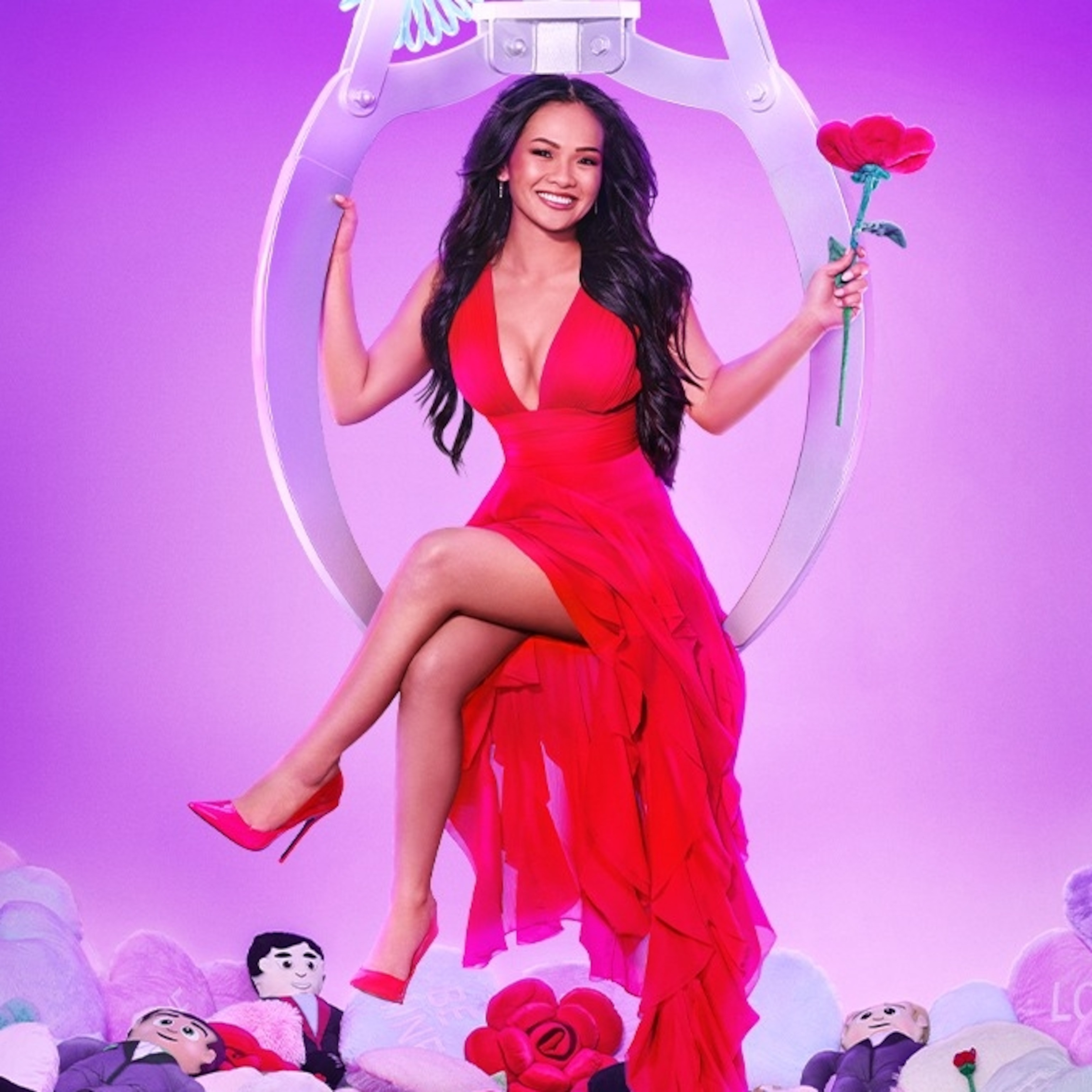 Jenn Tran on Dancing with the Stars
Jenn Tran on Dancing with the Stars
Alt text: Jenn Tran, after her journey on The Bachelorette, prepares to dance on Dancing with the Stars.
- Dwight Howard: As a professional basketball player, Dwight brings exceptional athleticism and a competitive spirit. His experience with teamwork and performance could make him a strong contender.
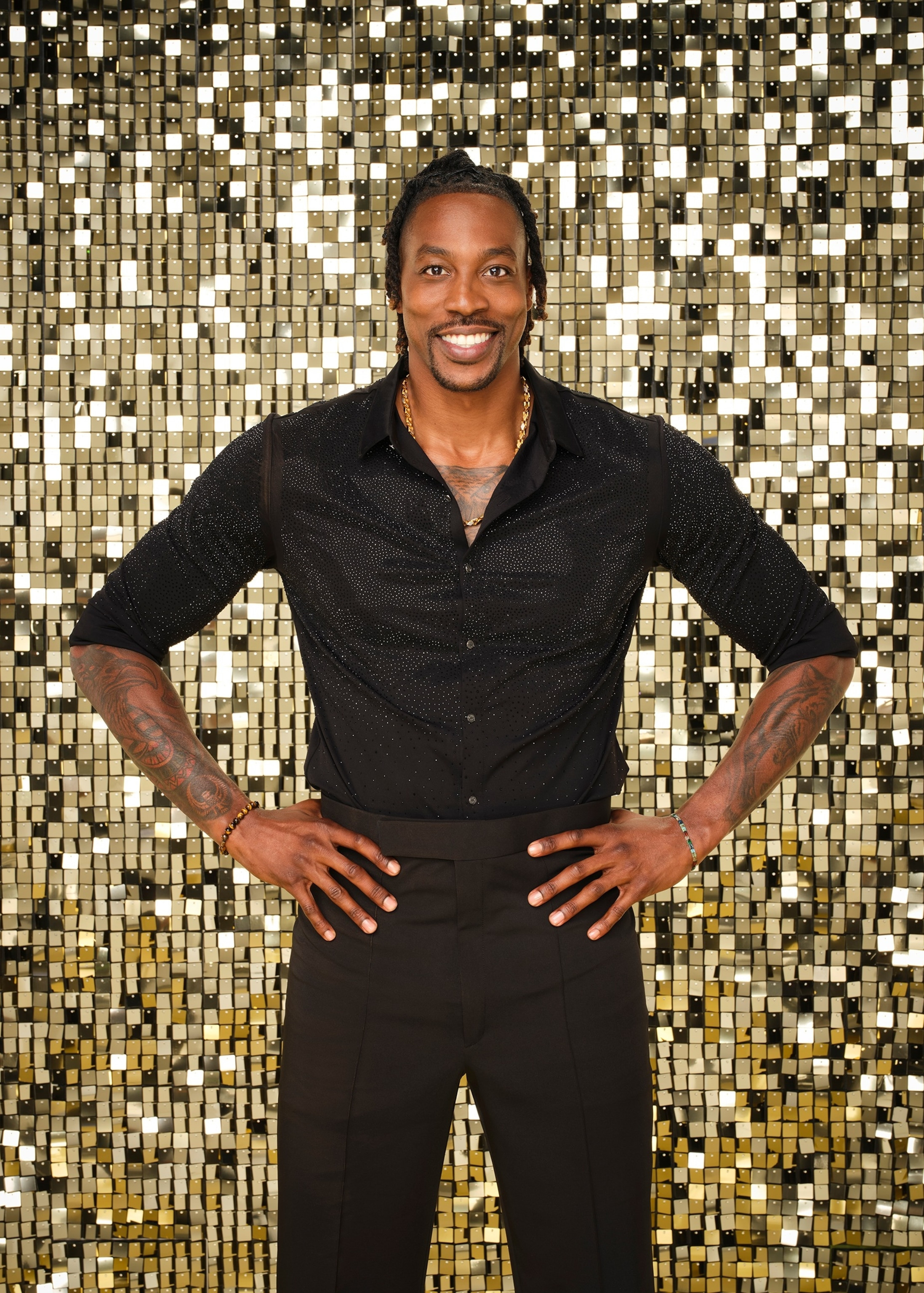 Dwight Howard on Dancing with the Stars
Dwight Howard on Dancing with the Stars
Alt text: Dwight Howard, a professional basketball player, is ready to dance on Dancing with the Stars.
- Stephen Nedoroscik: As an Olympic gymnast, Stephen brings incredible body control, flexibility, and discipline. His experience with high-stakes competition could help him excel in the ballroom.
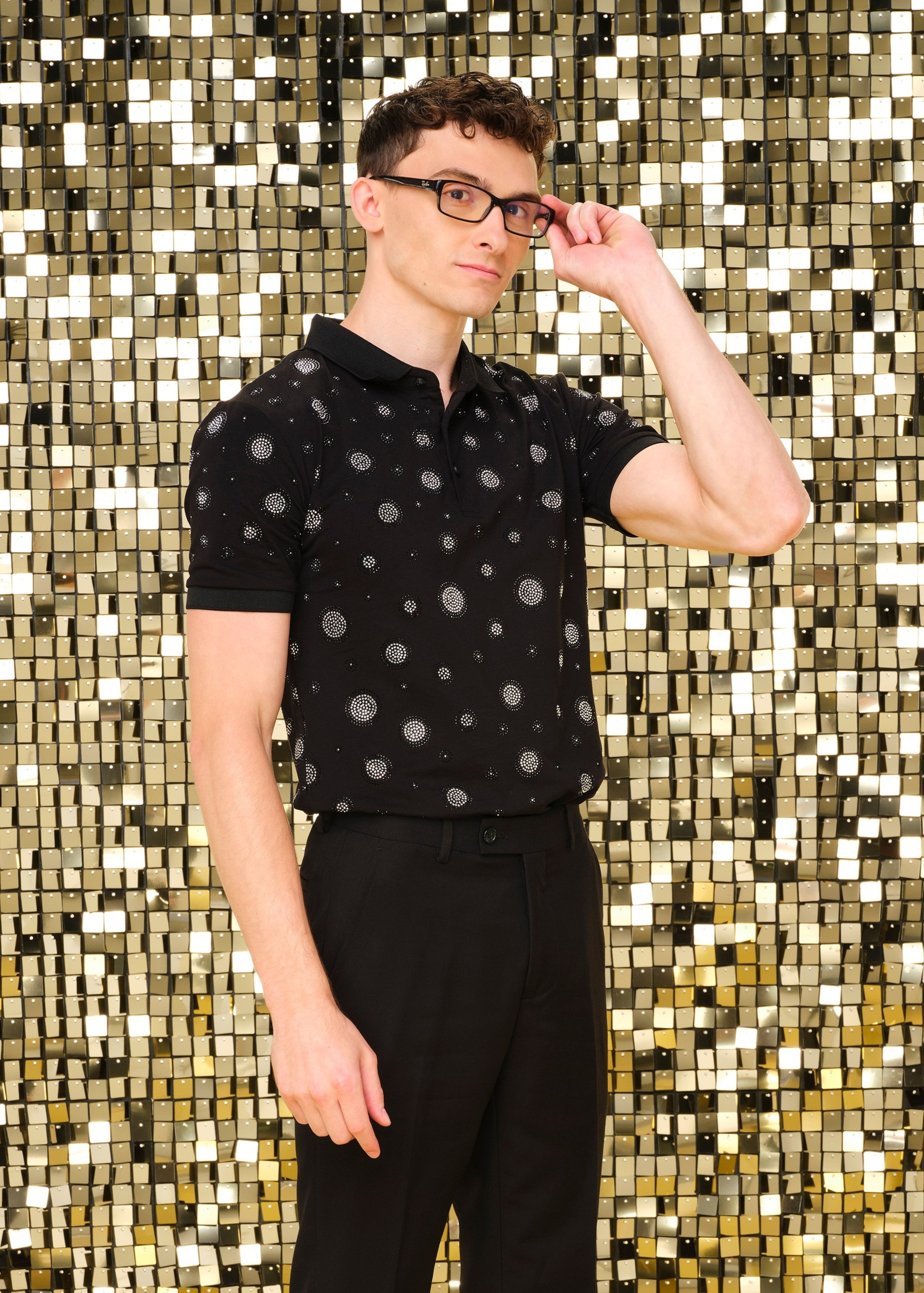 Stephen Nedoroscik on Dancing with the Stars
Stephen Nedoroscik on Dancing with the Stars
Alt text: Stephen Nedoroscik, an Olympic gymnast, will bring his skills to Dancing with the Stars.
1.2 What makes the professional dancer pairings unique and what are their strengths?
Each professional dancer brings a unique set of skills and experiences that complement their celebrity partner. Here are some potential strengths of each pairing:
-
Val Chmerkovskiy and Phaedra Parks: Val’s extensive experience and ability to bring out the best in his partners combined with Phaedra’s natural stage presence could create a dynamic and entertaining duo. Val’s choreography often emphasizes strength and showmanship, which could align well with Phaedra’s personality.
-
Witney Carson and Danny Amendola: Witney is known for her creative choreography and ability to connect with her partners. Danny’s athleticism and discipline could make him a quick learner, allowing Witney to push him to his full potential.
-
Jenna Johnson and Joey Graziadei: Jenna’s technical expertise and ability to create visually stunning routines, combined with Joey’s charisma and willingness to learn, could result in memorable performances. Their chemistry will be key to captivating the audience.
-
Alan Bersten and Ilona Maher: Alan is known for his energetic choreography and ability to bring out the personality of his partners. Ilona’s strength and competitive spirit could make them a powerful and engaging duo.
-
Brandon Armstrong and Chandler Kinney: Brandon’s innovative choreography and experience with younger partners could align well with Chandler’s dance background and acting skills. They could create routines that are both technically impressive and emotionally engaging.
-
Ezra Sosa and Anna Delvey: Ezra, though a newer pro, brings fresh energy and a unique perspective. Paired with Anna’s intriguing persona, they could surprise audiences with their creativity and unexpected performances.
-
Britt Stewart and Eric Roberts: Britt’s focus on storytelling through dance and her ability to connect with her partners emotionally could complement Eric’s acting background. They could create performances that are both moving and technically sound.
-
Gleb Savchenko and Brooks Nader: Gleb’s reputation for steamy, attention-grabbing choreography combined with Brooks’ experience as a model could create visually stunning and captivating performances.
-
Emma Slater and Reginald VelJohnson: Emma is known for her ability to bring out the best in her partners, regardless of their experience level. Paired with Reginald’s charm and likability, they could become a fan favorite duo.
-
Pasha Pashkov and Tori Spelling: Pasha’s technical expertise and focus on precision combined with Tori’s performance background could create routines that are both polished and emotionally resonant.
-
Sasha Farber and Jenn Tran: Sasha’s high-energy choreography and ability to connect with his partners could complement Jenn’s determination and drive. They could create performances that are both dynamic and heartfelt.
-
Daniella Karagach and Dwight Howard: Daniella’s innovative and challenging choreography combined with Dwight’s athleticism could result in spectacular and memorable performances. Their partnership could be one of the most exciting to watch.
-
Rylee Arnold and Stephen Nedoroscik: Rylee, a newer pro, brings youthful energy and fresh ideas. Paired with Stephen’s incredible body control and discipline, they could surprise audiences with their technical skills and creative routines.
These pairings promise an exciting season of Dancing with the Stars, with each duo bringing their unique strengths and dynamics to the ballroom.
2. What are the key factors that contribute to a successful partnership on Dancing with the Stars?
Several key factors contribute to a successful partnership on Dancing with the Stars:
-
Chemistry: Strong chemistry between the celebrity and professional dancer is essential. This involves mutual respect, trust, and the ability to work well together under pressure.
-
Communication: Open and honest communication is crucial for understanding each other’s strengths and weaknesses. This helps in tailoring the choreography and training approach to suit both partners.
-
Teaching and Learning Styles: The professional dancer’s ability to adapt their teaching style to the celebrity’s learning style is vital. Some celebrities may respond better to visual cues, while others prefer a more hands-on approach.
-
Dedication and Hard Work: Both partners must be dedicated and willing to put in the hours of practice required to master the routines. This includes physical conditioning, memorizing choreography, and refining technique.
-
Constructive Feedback: The ability to give and receive constructive feedback is important for continuous improvement. This helps in identifying areas that need work and celebrating successes.
-
Support and Encouragement: Providing emotional support and encouragement to each other can help overcome challenges and maintain a positive attitude throughout the competition.
-
Creative Collaboration: Collaborating on choreography and performance elements can lead to more innovative and engaging routines. This involves incorporating the celebrity’s personality and strengths into the dance.
-
Adaptability: The ability to adapt to unexpected challenges, such as injuries or changes in choreography, is essential. This requires flexibility and a willingness to work together to find solutions.
-
Resilience: The ability to bounce back from setbacks, such as low scores or negative feedback, is crucial for maintaining momentum and staying competitive.
-
Fun and Enjoyment: Ultimately, the partnership should be enjoyable for both partners. Having fun and celebrating successes can create a positive dynamic that resonates with the audience and judges.
A successful partnership on Dancing with the Stars is a combination of skill, chemistry, hard work, and mutual support. These factors can help a duo navigate the challenges of the competition and create memorable performances.
2.1 What role does chemistry play between the celebrity and professional dancer in their performance and success?
Chemistry plays a pivotal role in the performance and success of a celebrity and professional dancer partnership on Dancing with the Stars. According to research on interpersonal relationships, chemistry fosters a positive environment that enhances collaboration and communication. Here’s how chemistry influences their journey:
-
Enhanced Communication: When partners have strong chemistry, communication becomes more natural and effective. They can understand each other’s cues, both verbal and non-verbal, which is crucial for coordinating complex dance routines.
-
Increased Trust: Chemistry builds trust, allowing the celebrity to feel more comfortable taking risks and pushing their boundaries under the guidance of their professional partner. Trust is essential for trying new moves and expressing vulnerability through dance.
-
Improved Performance Quality: The emotional connection between partners can translate into a more compelling performance. Audiences are drawn to duos that exhibit genuine rapport and can convey emotions effectively through their movements.
-
Greater Enjoyment: When there’s chemistry, the entire process becomes more enjoyable. This positivity can reduce stress and make the rigorous training schedule more bearable, leading to better performance outcomes.
-
Stronger Audience Connection: Viewers are more likely to support a partnership where they see genuine connection and affection. This emotional investment can translate into higher viewer votes, a critical component of the show’s success.
2.2 How important is the teaching style of the professional dancer in relation to the celebrity’s learning style?
The teaching style of the professional dancer is critical in relation to the celebrity’s learning style on Dancing with the Stars. Effective teaching ensures that the celebrity can grasp and execute the dance techniques, choreography, and performance elements. According to educational psychology, aligning teaching methods with individual learning preferences enhances comprehension and retention. Here’s why it matters:
-
Maximizing Learning Efficiency: Different celebrities have different learning styles—some may be visual learners, others auditory, and some kinesthetic. A professional dancer who can adapt their teaching method to suit these styles ensures that the celebrity learns efficiently and effectively.
-
Building Confidence: When the teaching style matches the learning style, the celebrity is more likely to experience success early on. This builds confidence, which is essential for tackling more challenging routines and performances.
-
Preventing Frustration: A mismatch between teaching and learning styles can lead to frustration and discouragement. A skilled professional dancer will recognize this and adjust their approach to keep the celebrity motivated and engaged.
-
Enhancing Skill Development: By tailoring their instruction, professional dancers can help celebrities develop a wide range of dance skills, from basic steps to advanced techniques. This versatility is crucial for excelling in various dance styles throughout the competition.
-
Creating a Positive Environment: An adaptive teaching style fosters a positive learning environment where the celebrity feels supported and encouraged. This can improve their overall experience and lead to better performance outcomes.
3. What are the different dance styles featured on Dancing with the Stars and how do they impact the pairings?
Dancing with the Stars features a wide array of dance styles, each with its unique characteristics and challenges. These styles significantly impact the pairings as they require different skill sets and performance qualities:
-
Ballroom Dances:
- Waltz: A smooth, flowing dance that requires elegance and grace. The pairing needs to have good posture, musicality, and the ability to move fluidly across the floor.
- Tango: A passionate and dramatic dance that demands sharp movements, strong posture, and intense connection. The pairing needs to convey confidence and control.
- Foxtrot: A sophisticated and smooth dance that requires rhythm, coordination, and partnership. The pairing needs to have a good sense of timing and the ability to maintain a consistent tempo.
- Viennese Waltz: A fast-paced and romantic dance that requires stamina, precision, and the ability to navigate the floor quickly. The pairing needs to be able to maintain their balance and coordination at high speeds.
- Quickstep: A lively and energetic dance that requires speed, agility, and synchronization. The pairing needs to have good footwork and the ability to perform quick changes in direction.
-
Latin Dances:
- Cha-Cha-Cha: A playful and flirtatious dance that requires rhythm, energy, and precise footwork. The pairing needs to have good hip action and the ability to convey a sense of fun.
- Samba: A high-energy and vibrant dance that demands rhythm, bounce, and fluidity. The pairing needs to have strong core muscles and the ability to move their hips and torso independently.
- Rumba: A sensual and romantic dance that requires connection, emotion, and smooth movements. The pairing needs to convey intimacy and passion through their performance.
- Paso Doble: A dramatic and powerful dance that requires strength, posture, and theatricality. The pairing needs to embody the roles of the matador and the cape, conveying intensity and control.
- Jive: A fast-paced and energetic dance that demands stamina, agility, and precision. The pairing needs to have good footwork and the ability to perform quick kicks and flicks.
-
Other Styles:
- Contemporary: A modern and expressive dance that allows for freedom of movement and emotional interpretation. The pairing needs to connect with the music and convey their feelings through their bodies.
- Jazz: An energetic and improvisational dance that requires rhythm, coordination, and personality. The pairing needs to have good musicality and the ability to express themselves creatively.
- Hip-Hop: A street-style dance that demands rhythm, energy, and attitude. The pairing needs to have good body isolations and the ability to perform complex moves with precision.
The different dance styles require different skill sets and performance qualities, which can highlight the strengths and weaknesses of each pairing. Some celebrities may excel in ballroom dances due to their grace and elegance, while others may shine in Latin dances due to their energy and rhythm. The professional dancers must be able to adapt their choreography and teaching style to suit each dance style and help their celebrity partner showcase their talents.
3.1 How do ballroom dances differ from Latin dances in terms of technique, performance, and required skill sets?
Ballroom and Latin dances differ significantly in technique, performance, and required skill sets, each demanding unique physical and expressive abilities. Here’s a detailed comparison:
| Feature | Ballroom Dances | Latin Dances |
|---|---|---|
| Technique | Emphasizes smooth, flowing movements and sustained lines. | Focuses on sharp, energetic movements and rhythmic precision. |
| Posture | Upright and elegant, with a strong frame. | More relaxed and flexible, with pronounced hip action. |
| Footwork | Precise and controlled, with heel leads and toe leads. | Quick and intricate, often using ball-flat-ball footwork. |
| Connection | Strong partner connection with constant physical contact. | Dynamic partner connection with moments of separation and interaction. |
| Performance | Emphasizes grace, sophistication, and storytelling through movement. | Highlights passion, energy, and a playful interaction between partners. |
| Musicality | Focuses on interpreting the melody and creating smooth, continuous phrases. | Centers on rhythm and percussion, with emphasis on syncopation and accents. |
| Expression | More reserved and elegant, with a focus on understated emotion. | More expressive and flamboyant, with a focus on conveying intense emotions. |
| Skill Sets | ||
| Balance | Essential for maintaining posture and control during smooth movements. | Necessary for executing quick changes in direction and maintaining stability. |
| Coordination | Needed for synchronizing movements with a partner and navigating the dance floor. | Important for coordinating complex footwork and hip movements. |
| Stamina | Required for sustaining long, flowing sequences without losing form. | Necessary for maintaining energy and precision throughout fast-paced routines. |
| Strength | Important for maintaining a strong frame and supporting partner movements. | Useful for executing powerful hip movements and dynamic poses. |
3.2 What are some common challenges that celebrity dancers face when transitioning between different dance styles on Dancing with the Stars?
Celebrity dancers on Dancing with the Stars often face numerous challenges when transitioning between different dance styles. Each style requires unique techniques, postures, and expressive qualities, making it difficult for dancers to adapt quickly. Here are some common hurdles:
-
Technical Adjustments:
- Posture: Switching between the upright frame of ballroom dances and the relaxed, hip-focused posture of Latin dances can be challenging.
- Footwork: Ballroom dances often require heel leads and smooth footwork, while Latin dances emphasize ball-flat-ball footwork and intricate steps.
- Connection: Maintaining constant physical contact in ballroom dances versus the dynamic connection with moments of separation in Latin dances requires different connection skills.
-
Performance and Expression:
- Emotional Range: Conveying the elegance and grace of a waltz is different from expressing the passion and energy of a cha-cha.
- Musicality: Interpreting the melody in ballroom dances versus emphasizing rhythm and percussion in Latin dances requires different musical sensibilities.
- Confidence: Dancers may feel more confident in one style over another, affecting their performance quality.
-
Physical Demands:
- Stamina: Fast-paced dances like the jive or quickstep require high levels of stamina, which may be difficult for celebrities to maintain.
- Strength and Flexibility: Executing powerful hip movements in samba or maintaining balance in intricate footwork can test a dancer’s physical limits.
-
Learning Curve:
- Mastering New Techniques: Each dance style has its unique set of steps and techniques, requiring significant time and effort to learn and perfect.
- Adapting to Choreography: Dancers must quickly adapt to new choreography each week, which can be overwhelming, especially when switching between drastically different styles.
-
Psychological Factors:
- Overcoming Fear: Dancers may feel intimidated by certain styles, especially those that are outside their comfort zone.
- Maintaining Confidence: Negative feedback or low scores in one style can affect a dancer’s confidence in subsequent performances.
4. How do the judges’ critiques and scores influence the dynamics between the dancing partners?
The judges’ critiques and scores play a significant role in shaping the dynamics between dancing partners on Dancing with the Stars. Constructive criticism can help partners identify areas for improvement and refine their technique. Praises can validate their hard work and boost their confidence. According to communication studies, feedback influences motivation, performance, and interpersonal relationships. Here’s how the judges’ feedback affects the partners:
-
Motivation and Confidence:
- High Scores: Positive feedback and high scores can boost morale and motivate partners to push themselves further.
- Low Scores: Negative feedback and low scores can be discouraging, leading to self-doubt and decreased motivation.
-
Communication and Collaboration:
- Constructive Criticism: Constructive feedback can open up lines of communication, encouraging partners to discuss their strengths and weaknesses.
- Problem Solving: Partners may work together to address specific issues raised by the judges, fostering a sense of teamwork.
-
Performance Quality:
- Technical Refinement: Judges’ comments on technique can guide partners in refining their footwork, posture, and overall execution.
- Expressive Improvement: Feedback on performance quality can help partners enhance their emotional connection and storytelling abilities.
-
Public Perception:
- Audience Support: Positive reviews from the judges can sway public opinion, leading to increased support and votes.
- Elimination Risk: Negative reviews can put partners at risk of elimination, adding pressure to their subsequent performances.
-
Emotional Dynamics:
- Stress and Anxiety: Facing criticism can create stress and anxiety, affecting the partners’ ability to perform at their best.
- Resilience: Partners must develop resilience and learn to bounce back from setbacks, using feedback to fuel their determination.
-
Choreography and Strategy:
- Style Selection: Judges’ preferences may influence the partners’ choice of dance styles in future weeks.
- Routine Adjustments: Partners may adapt their choreography based on judges’ suggestions, aiming to showcase their strengths and address their weaknesses.
4.1 How do high scores and positive critiques from the judges impact the confidence and performance of the dancing pairs?
High scores and positive critiques from the judges significantly boost the confidence and enhance the performance of dancing pairs on Dancing with the Stars. Here’s how:
-
Increased Confidence:
- Validation: Positive feedback validates the hard work and dedication of the dancing pair, reinforcing their belief in their abilities.
- Reduced Self-Doubt: High scores diminish self-doubt and anxiety, allowing dancers to approach subsequent performances with greater assurance.
- Empowerment: Constructive praise empowers dancers to take risks and explore new creative avenues, pushing their boundaries and expanding their skill set.
-
Enhanced Performance:
- Relaxation: With increased confidence, dancers are more relaxed and poised, enabling them to execute complex routines with greater precision and fluidity.
- Expression: Positive feedback encourages dancers to express themselves more freely and authentically, resulting in more emotionally engaging performances.
- Connection: When dancers feel confident, they can connect more deeply with their partner and the audience, creating a magnetic and captivating stage presence.
-
Motivation and Drive:
- Reinforcement: High scores reinforce positive behavior and motivate dancers to maintain their momentum, striving for even greater success in future weeks.
- Inspiration: Positive critiques inspire dancers to challenge themselves and explore new creative directions, pushing the boundaries of their artistic expression.
- Commitment: Acknowledgment and encouragement from the judges reaffirm the dancers’ commitment to the competition, strengthening their resolve to excel and achieve their goals.
4.2 How do low scores and negative critiques affect the dynamics within the dancing partnership and what strategies can they use to overcome these challenges?
Low scores and negative critiques can significantly impact the dynamics within a dancing partnership, potentially leading to tension, self-doubt, and decreased motivation. However, by employing effective strategies, partners can overcome these challenges and emerge stronger. Here’s how negative feedback affects the partnership and strategies to mitigate its impact:
-
Potential Negative Effects:
- Decreased Morale: Low scores can deflate the dancers’ spirits, leading to feelings of inadequacy and discouragement.
- Increased Tension: Negative critiques may create tension and conflict within the partnership, especially if one partner feels blamed for the poor performance.
- Self-Doubt: Dancers may start questioning their abilities, leading to anxiety and hesitation in future performances.
-
Strategies for Overcoming Challenges:
- Open Communication:
- Honest Dialogue: Partners should engage in honest and open dialogue, addressing their concerns and emotions without assigning blame.
- Active Listening: Emphasizing active listening allows partners to understand each other’s perspectives and validate their feelings.
- Constructive Problem-Solving:
- Identifying Weaknesses: Partners should collaboratively identify specific areas of weakness highlighted by the judges, focusing on actionable steps for improvement.
- Creating a Plan: Developing a strategic plan for addressing these weaknesses, including targeted practice and skill-building exercises, can provide a sense of direction and purpose.
- Seeking Support:
- Professional Guidance: Consulting with coaches, choreographers, or mentors can provide valuable insights and strategies for overcoming challenges.
- Peer Support: Connecting with other dancers or participants who have faced similar setbacks can offer encouragement and perspective.
- Positive Mindset:
- Reframing Feedback: Partners should reframe negative critiques as opportunities for growth and learning, rather than dwelling on past mistakes.
- Focusing on Strengths: Recognizing and celebrating their strengths can help dancers maintain a positive self-image and build resilience.
- Teamwork and Unity:
- Shared Goals: Reinforcing their shared goals and commitment to the competition can strengthen the partnership’s bond and foster a sense of unity.
- Mutual Support: Offering unwavering support and encouragement to each other can help partners weather the storm and emerge stronger together.
- Open Communication:
5. How does the audience vote impact the survival of the dancing pairs on Dancing with the Stars?
The audience vote plays a crucial role in determining which dancing pairs survive each week on Dancing with the Stars. While the judges’ scores provide a professional assessment of the performances, the audience vote reflects the popularity and connection that the pairs have with the viewers. According to media studies, audience engagement is a key factor in the success of reality TV shows. Here’s how audience votes affect the pairings:
-
Direct Influence on Elimination:
- Combined Score: The audience vote is combined with the judges’ scores to determine the overall ranking of the pairs.
- Bottom Two/Three: The pairs with the lowest combined scores are typically placed in the bottom two or three and face potential elimination.
- Saving Grace: In some seasons, the judges have the power to save one of the bottom pairs, but ultimately, the audience vote carries significant weight.
-
Reflecting Popularity and Connection:
- Likeability: Audience votes often reflect the likeability and relatability of the celebrity and their professional partner.
- Emotional Connection: Pairs that evoke strong emotions, whether through their performances or personal stories, tend to garner more votes.
- Fan Base: Celebrities with large and dedicated fan bases have an advantage, as their supporters are more likely to vote consistently.
-
Strategic Considerations:
- Performance Choices: Pairs may tailor their performances to appeal to the audience, selecting dance styles and themes that they believe will resonate with viewers.
- Social Media Engagement: Actively engaging with fans on social media platforms can help build a loyal following and encourage voting.
- Storytelling: Sharing personal stories and struggles can create a deeper connection with the audience, increasing their likelihood of voting.
-
Potential for Upsets:
- Popularity vs. Skill: Sometimes, a less technically skilled pair may survive longer than a more skilled pair due to their popularity with the audience.
- Underdog Effect: The audience often roots for the underdog, so a pair that starts out with low scores but shows improvement may gain momentum and votes.
-
Impact on Pair Dynamics:
- Increased Pressure: Knowing that their survival depends on audience votes can add pressure to the dancing pairs, affecting their performance.
- Validation: Receiving a high number of votes can validate the pair’s hard work and boost their confidence, while low votes can be discouraging.
5.1 What strategies can dancing pairs use to garner more audience votes and build a stronger connection with the viewers?
Dancing pairs can employ several strategies to garner more audience votes and build a stronger connection with viewers on Dancing with the Stars. These strategies focus on showcasing their personality, creating emotional connections, and actively engaging with their fan base. Here are some key tactics:
-
Authenticity and Personality:
- Be Yourself: Dancers should allow their true personalities to shine through, both on and off the dance floor. Authenticity resonates with viewers and makes them more relatable.
- Share Your Story: Sharing personal stories, struggles, and triumphs can create a deeper emotional connection with the audience.
- Showcase Chemistry: Emphasize the positive chemistry and camaraderie between partners, highlighting their teamwork and mutual support.
-
Emotional Performances:
- Connect with the Music: Choose music that evokes strong emotions and allows dancers to express themselves authentically.
- **Tell

